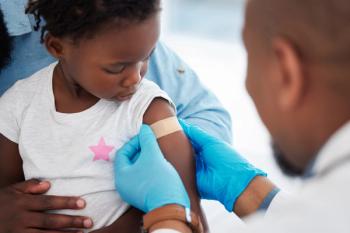Key takeaways:
- FDA approved an expanded indication for antithrombin III (THROMBATE III) to include pediatric patients with hereditary antithrombin deficiency (hATd).
- Approval was based on extrapolated adult clinical data showing ATc can be “safely and effectively used in pediatric patients with hATd.”
- With the update, antithrombin III becomes the first and only ATc approved for both adults and pediatric patients with hATd.
The FDA has approved an expanded indication of Grifols' antithrombin III (human) (THROMBATE III) to include pediatric patients diagnosed with hereditary antithrombin deficiency (hATd). With the label update, antithrombin III becomes the first and only antithrombin concentrate (ATc) approved for adults and pediatrics with hATd, according to a November 18, 2025, press release from Grifols.
Approval was supported by the extrapolation of data from 2 clinical studies in adult patients, which concluded that ATc can be "safely and effectively used in pediatric patients with hATd," according to Grifols.
"This label expansion helps close a long-standing gap in the treatment of pediatric patients with hereditary antithrombin deficiency,” said George M. Rodgers, III, MD, PhD, professor of Medicine, Division of Hematology and Hematologic Malignancies, University of Utah School of Medicine, in a statement. "It gives clinicians added confidence that ATc can be appropriately used in children.”
That confidence can be key, as Grifols stated hATd has a high thrombotic risk, with 85% of patients with hATd will have at least 1 thrombotic episode by age 50.
“Expanding the indication to include pediatric patients provides a new option for children and families facing hereditary antithrombin deficiency,” said Roland Wandeler, president of Grifols Biopharma.
According to Grifols, antithrombin III demonstrated efficacy in clinical trials for hATd patients, supporting treatment and prevention of thromboembolism before, during, and after surgery and childbirth.
Safety information for antithrombin III
- Hypersensitivity reactions may occur. If signs of an acute reaction develop, immediately stop the infusion and initiate appropriate care.
- Because antithrombin III is derived from human plasma, it may pose a risk of transmitting infectious agents, including viruses, the variant Creutzfeldt-Jakob disease (vCJD) agent, and, theoretically, the Creutzfeldt-Jakob disease (CJD) agent. Unknown infectious agents may also be present.
- Conduct coagulation testing to prevent over- or under-anticoagulation and monitor for bleeding or thrombosis. Use functional plasma AT assays (amidolytic or clotting); do not use immunoassays.
In clinical studies, the most common adverse reactions (≥5%) included dizziness, chest discomfort, nausea, dysgeusia, and pain (cramps).
The anticoagulant effect of heparin is increased when used with antithrombin III in patients with hereditary AT deficiency, so heparin or low-molecular-weight heparin doses may require reduction to avoid bleeding, stated Grifols.
Reference:
Grifols receives expanded indication for THROMBATE III (antithrombin III [human]) label in US, strengthening treatment options for pediatric patients. Grifols. Press release. November 18, 2025. Accessed November 18, 2025. https://www.grifols.com/en/view-news/-/news/grifols-receives-expanded-indication-for-thrombate-iii-antithrombin-iii-human-label-in-us-strengthening-treatment-options-for-pediatric-patients












